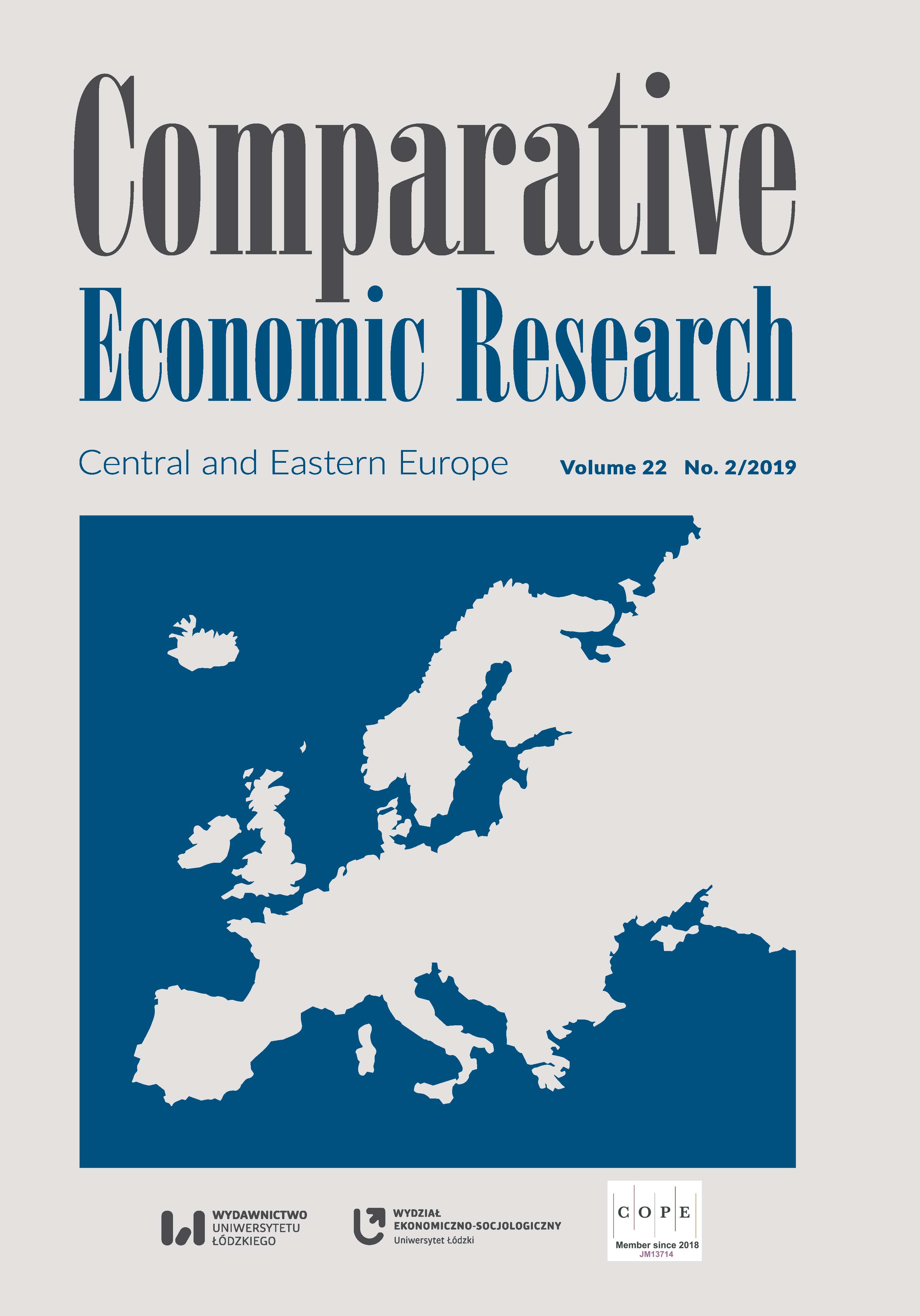Effects of the Pillars of Competitiveness on the Competitive Positions of Poland and the Visegrad Group Countries in the Post‑Accession Period
DOI:
https://doi.org/10.2478/cer-2019-0012Keywords:
international economic competitiveness, pillars of the competitiveness of the Polish economy, Poland of the V4 countriesAbstract
The article presents the results of an analysis aimed at assessing the effects of fundamental factors (pillars) on the international positions and competitiveness of the economies of Poland and the other Visegrad Group (V4) countries. It attempts to verify the hypothesis that in shaping their international competitive position, the V4 economies should rely more on efficiency enhancers as well as innovation and sophistication factors. The competitive positions of the economies covered and the changes thereof were determined on the basis of the Global Competitiveness Report (GCR) editions published by the World Economic Forum. The period under examination includes the years 2004–2017, but owing to the lack of comparable data, it was narrowed to the years 2006–2017. The article ends with a summary of the most important conclusions from the analysis.
Downloads
References
Bossak, J. (2000), Międzynarodowa konkurencyjność gospodarki kraju i przedsiębiorstwa. Zagadnienia teoretyczne i metodologiczne, [in:] Bossak, J., Bieńkowski, W. (eds.), Konkurencyjność gospodarki Polski w dobie integracji z Unią Europejską. Warszawa: Wydawnictwo SGH.
Google Scholar
Ezalea‑Harrison, F. (2005), On the competing notion of international competitiveness, ‘Advances in Competitiveness Research’, No. 13 (1), pp. 80–87.
Google Scholar
Kancs, D. (2011), The economic geography of labour migration: Competition, competitiveness and development, ‘Applied Geography’, No. 31 (1), pp. 191–200.
Google Scholar
Krugman, P. (1994), Competitiveness: A Dangerous Obsession, ‘Foreign Affairs’, No. 73 (2), pp. 28–44.
Google Scholar
Misala, J., Misztal, P., Młynarzewska, I., Siek, E. (2008), Międzynarodowa konkurencyjność gospodarki Polski w okresie 1990–2007. Radom: Politechnika Radomska.
Google Scholar
Molendowski, E. (2017a). An Internationally Competitive Economy: Poland Compared To The Visegrad Group Countries In The Post‑Accession Period. ‘Comparative Economic Research. Central and Eastern Europe’, No. 4/2017, pp. 5–17.
Google Scholar
Molendowski, E. (2017b), International competitive position of the Polish economy against the backdrop of the Visegrad Group countries–changes in the post‑accession period. Trends in the World Economy Vol. 9/2017, pp. 119–130.
Google Scholar
Porter, M., Rivkin, J. (2012), The Looming Challenge to U.S. Competitiveness, ‘Harvard Business Review’, No. 90 (3).
Google Scholar
Siebert, H. (2000), Zum Paradigma des Standortwettbewerbs. Tübingen: Mohr Siebeck.
Google Scholar
Thore, S., Tarverdyan, R. (2016). The sustainable competitiveness of nations, Technological Forecasting and Social Change, No. 106, pp. 108–114.
Google Scholar
WEF (2016). The Global Competitiveness Index Historical Dataset © 2005–2015. Geneva: WEF.
Google Scholar
WEF (2017). The Global Competitiveness Report 2017–2018. Geneva: WEF.
Google Scholar
Weresa, M.A. (2012), Systemy innowacyjne we współczesnej gospodarce światowej. Warszawa: Wydawnictwo Naukowe PWN.
Google Scholar
Żmuda, M. (2016), Strategie pobudzania konkurencyjności Singapuru i Irlandii w świetle koncepcji państwa rozwojowego – wnioski dla gospodarek doganiających, ‘Studia i Materiały. Miscellanea Oeconomicae’, Year 20, No. 3, Vol. II.
Google Scholar
Żmuda, M. (2017), Towards a Taxonomy of International Competitiveness, ‘Journal of Management and Business Administration. Central Europe’, Vol. 25, pp. 97–116.
Google Scholar
Żmuda, M., Molendowski, E. (2016), W poszukiwaniu istoty konkurencyjności gospodarki narodowej: studium interdyscyplinarne. ‘Finanse, Rynki Finansowe, Ubezpieczenia’, No. 3 (81).
Google Scholar
Downloads
Published
How to Cite
Issue
Section
License

This work is licensed under a Creative Commons Attribution-NonCommercial-NoDerivatives 4.0 International License.











